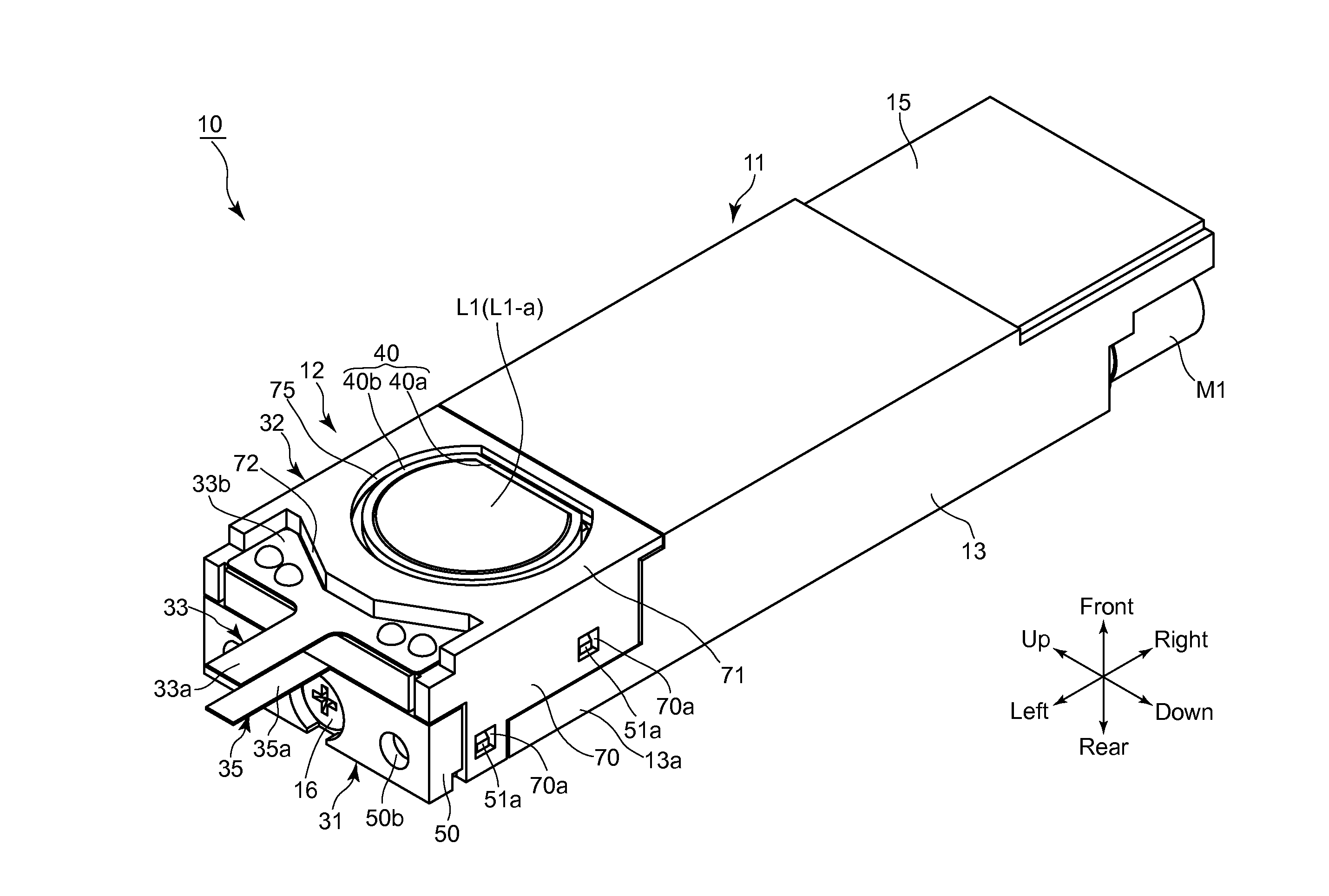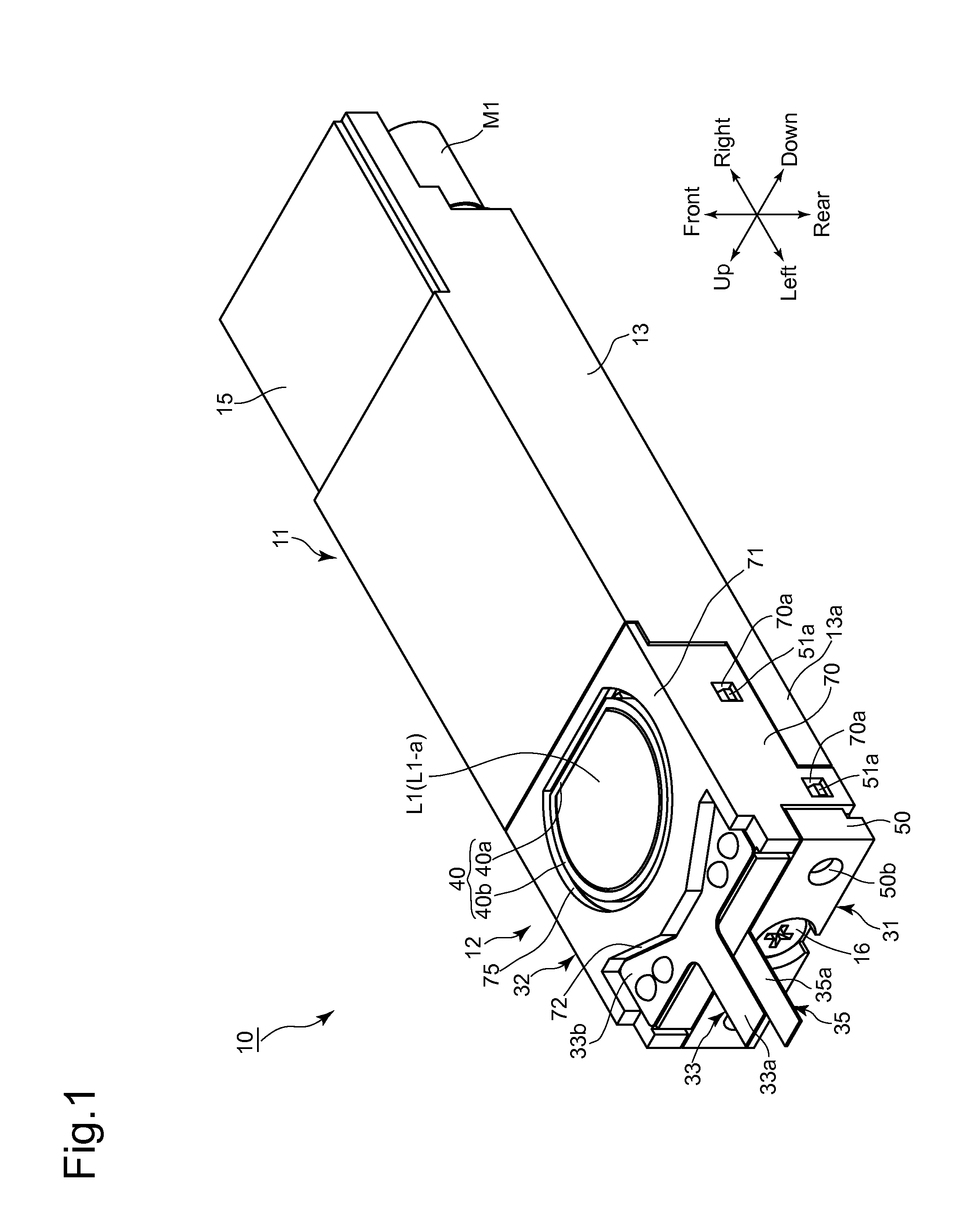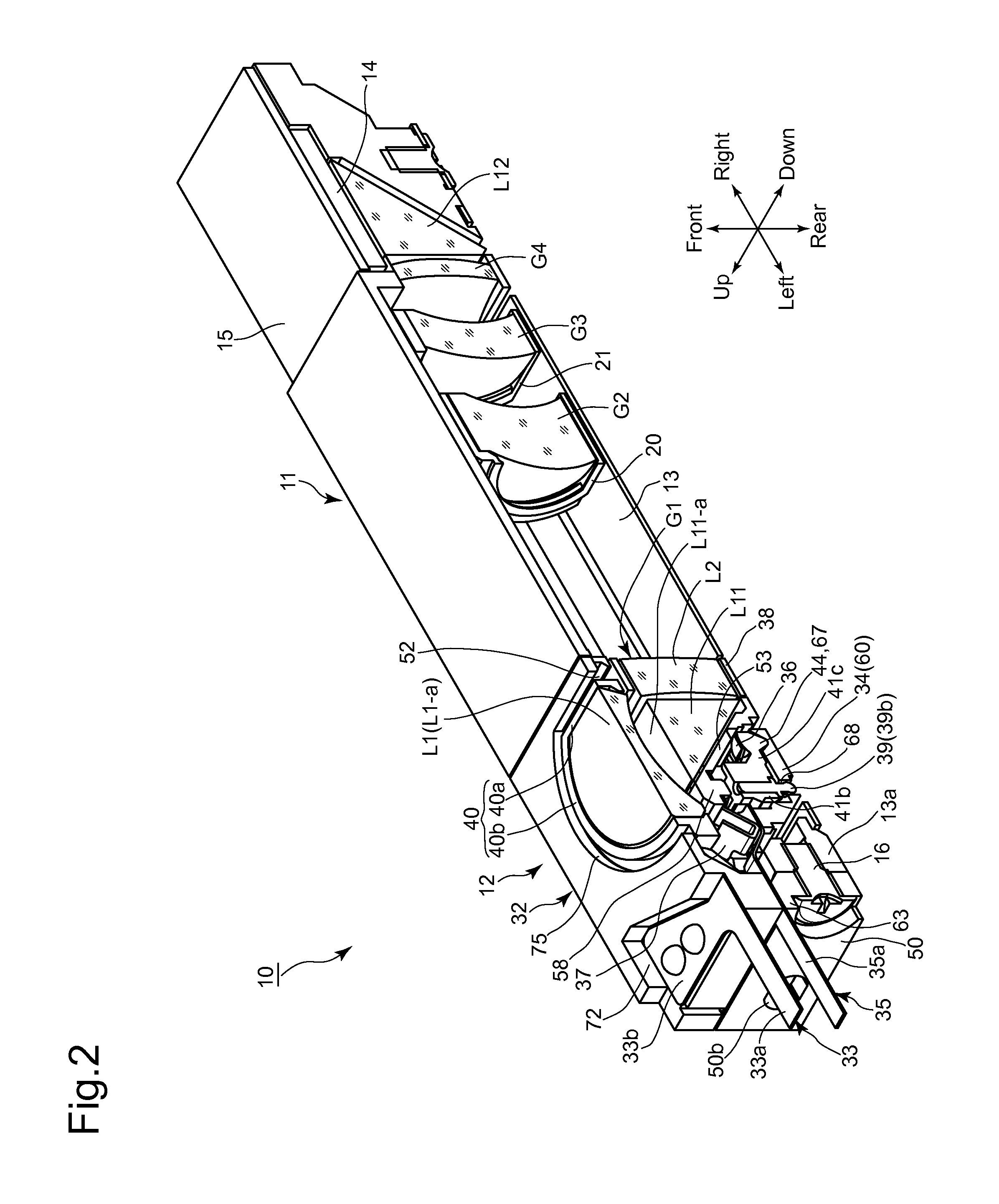Imaging apparatus
- Summary
- Abstract
- Description
- Claims
- Application Information
AI Technical Summary
Benefits of technology
Problems solved by technology
Method used
Image
Examples
first embodiment
[0082]An embodiment (first embodiment) of an imaging unit (imaging apparatus) 10 according to the present invention will be discussed below with reference to FIGS. 1 through 21. In the following descriptions, forward and rearward directions, leftward and rightward directions, and upward and downward directions are determined with reference to the directions of the double-headed arrows shown in the drawings. The object side corresponds to the front side. As shown by the outward appearance of the imaging unit 10 in FIG. 1, the imaging unit 10 has a laterally elongated shape which is slim in the forward / rearward direction and elongated in the leftward / rightward direction.
[0083]As shown in FIGS. 2, 4, 6 and 7, an imaging optical system of the imaging unit 10 is provided with a first lens group (front lens group) G1, a second lens group (rear lens group) G2, a third lens group (rear lens group) G3 and a fourth lens group (rear lens group) G4. The first lens group G1 is provided with a fi...
third embodiment
[0147]In the third embodiment shown in FIGS. 25 through 27, a pivot recess (contacting portion / spherical-swinging support portion) 267 which is different in shape from either of the pivot recesses 67 and 167 is formed in the base plate portion 60 of the sensor holder 34. The pivot recess 267 is provided therein with a circular opening 267a and is provided in the base of the opening 267a (in the rearward direction of the imaging unit 10) with a triangular (three-sided) pyramid-shaped recess 267b which has three movement limit sides (inner side walls) 267c. When the triangular pyramid-shaped recess 267b is viewed from front along the first optical axis O1 as shown in FIG. 26, the center of the inscribed sphere which touches each of the three movement limit sides 267c is positioned on an extension of the first optical axis O1.
[0148]In the third embodiment shown in FIGS. 25 through 27, a pivot projection (projecting portion) 244 which is formed on the first lens frame 30 has the same sh...
fifth embodiment
[0150]In the support mechanism shown in FIG. 29, a pivot recess (supported portion) 41d and a pivot recess (spherical-swinging support portion) 60a, the inner surfaces of which face each other, are formed on the pivot arm 41c of the first lens frame 30 and the base plate portion 60 of the sensor holder 34, respectively, and a spherical support ball (spherical-swinging support portion) 45 is sandwiched between the pivot recesses 41d and 60a and is rotatable therebetween. The center of the support ball 45 is coincident with the spherical-swinging center A1, and the first lens frame 30 can be made to perform the spherical swinging operation about the spherical-swinging center A1 by making the inner surfaces of the pivot recesses 41d and 60a come into sliding contact with the periphery of the support ball 45.
PUM
 Login to View More
Login to View More Abstract
Description
Claims
Application Information
 Login to View More
Login to View More - R&D
- Intellectual Property
- Life Sciences
- Materials
- Tech Scout
- Unparalleled Data Quality
- Higher Quality Content
- 60% Fewer Hallucinations
Browse by: Latest US Patents, China's latest patents, Technical Efficacy Thesaurus, Application Domain, Technology Topic, Popular Technical Reports.
© 2025 PatSnap. All rights reserved.Legal|Privacy policy|Modern Slavery Act Transparency Statement|Sitemap|About US| Contact US: help@patsnap.com



